Unit 7: NGOs and Migration Governance
Section 3: Case Study: The Kyiv Jewish Emigration Society
By examining the case of the Kyiv Jewish Emigration Society and related NGO practices, you will engage with both primary sources and contemporary scholarship to gain a deeper understanding of the historical roots of today’s global migration challenges.
3.1 What are the key facts about the foundation of the Society?
Founded in 1909, the Kyiv Jewish Emigration Society emerged as one of the influential and well-organized Jewish NGOs in the Russian Empire.
It operated in a period marked by intensified antisemitism, emigration demand among the population, and increasing professionalization of Jewish aid.
Though Jewish self-organization was restricted, the Society gained legal status by positioning itself as a humanitarian and logistical society rather than a political one. The society was formed against the backdrop of growing instability in the Russian Empire following the 1905 Revolution.
The anti-Jewish riots that erupted in the aftermath of the revolution led to the destruction of Jewish communities and widespread economic hardship, prompting thousands to seek emigration.
The epicenters of the pogroms were large urban centers such as Odesa, Kyiv, Chisinau, and Katerynoslav (now Dnipro), but smaller towns and cities located in the rural areas were also affected.
The pogroms were not random outbreaks of violence; they often followed a pattern of incitement by far-right nationalist groups, such as the Black Hundreds, and were often carried out with the passive consent or active participation of local authorities, police, and even military units.
The Kyiv Jewish Emigration Society responded by creating a legal mechanism that enabled Jews to navigate the increasingly restrictive migration policies of both Russia and destination countries, particularly the United States.
3.2 What were the stated goals of the Society?
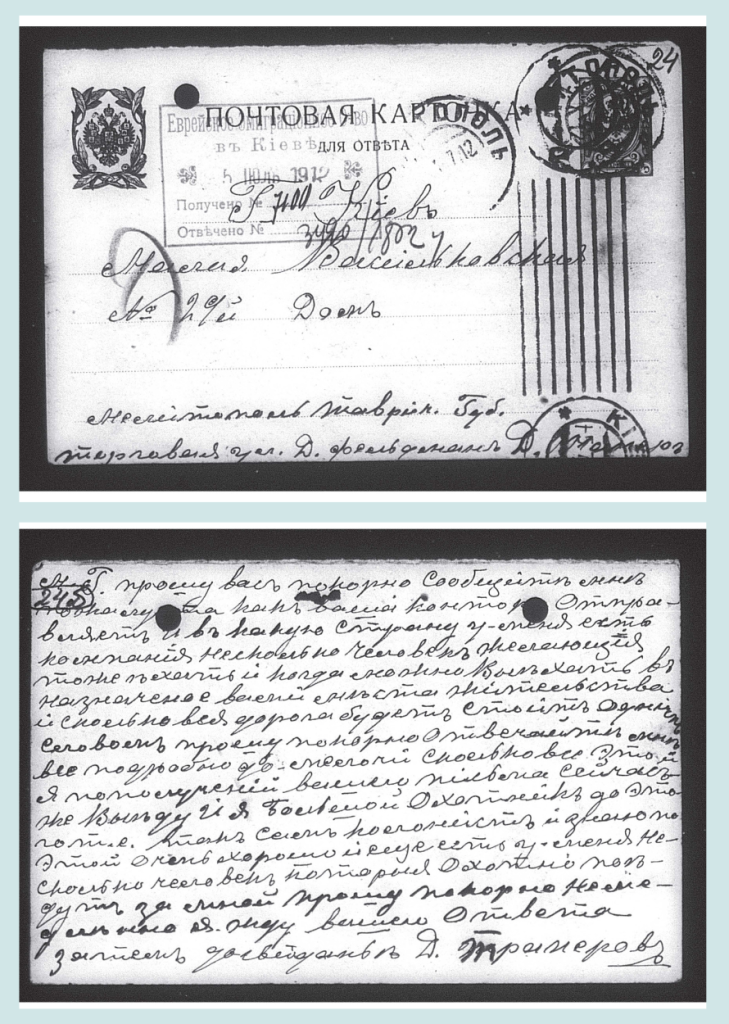
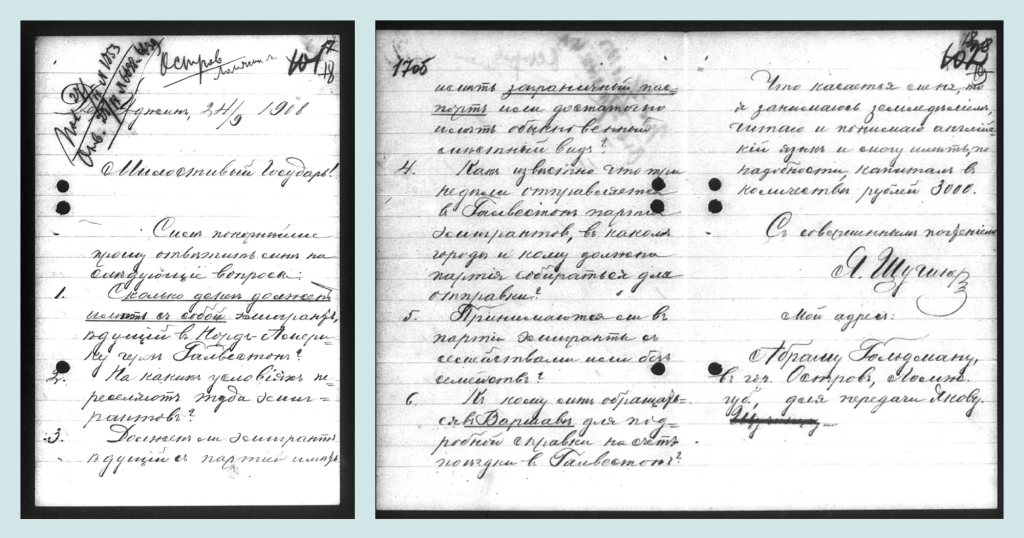
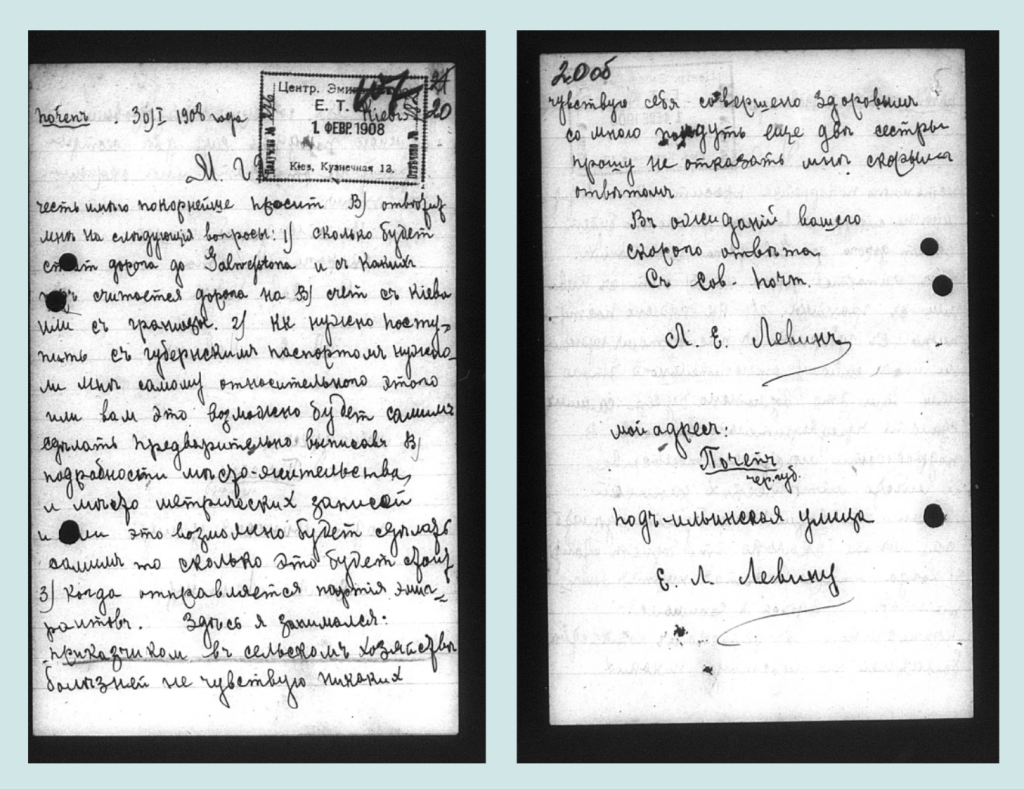
Unlike earlier migration waves, which were often spontaneous and disorganized, the Society sought to regulate emigration by providing structured assistance to individuals and families.
Its archives, preserved at the State Archive of Kyiv Oblast, provide detailed records of these operations, showcasing the Society’s extensive role in supporting emigrants at multiple stages of their journey.
The Society’s founding Statutes, approved by imperial authorities, emphasized the goal of “consistent regulation of Jewish emigration” by directing migrants away from congested cities, such as New York, toward underpopulated regions of the United States.
The emigration society was headquartered in Kyiv[1] but maintained a network of regional branches and trusted correspondents in major Jewish population centers across the Pale of Settlement.[2] The organization’s leadership included figures like Dr. M.E. Mandelstam and Dr. D.L. Johelman, both highly regarded in Jewish philanthropic circles.[3]
The Society maintained a hybrid structure: a grassroots relief agency and an elite-led NGO. It relied on volunteers, professionals, and regular communication with foreign Jewish aid societies.
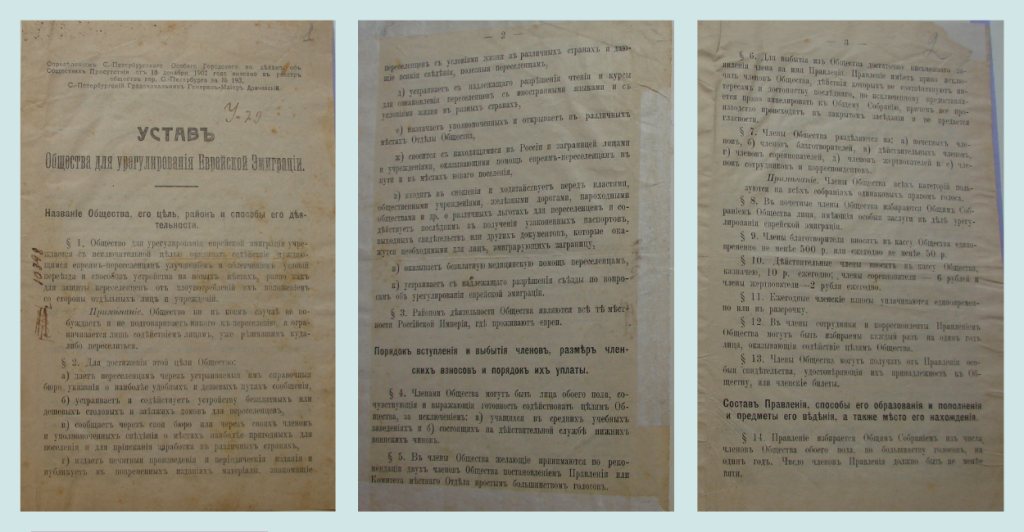
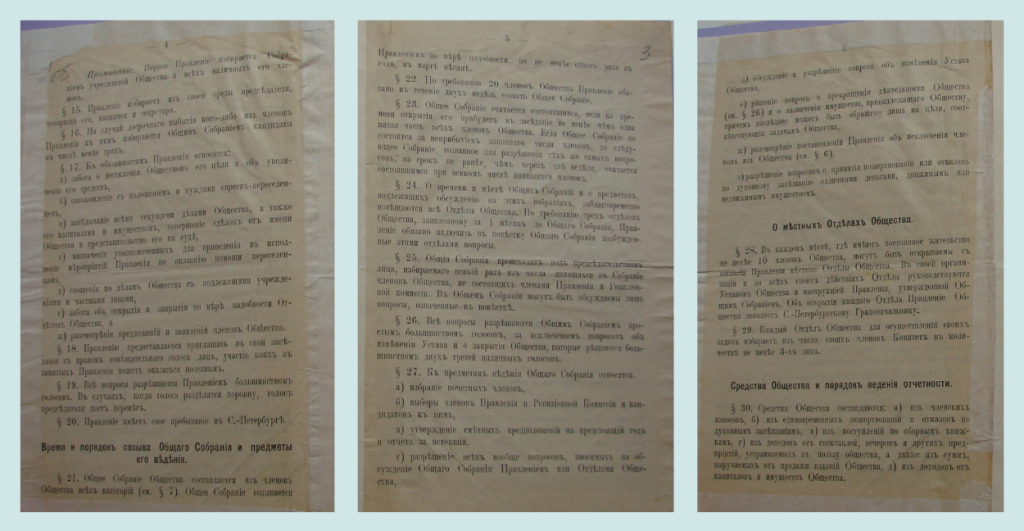
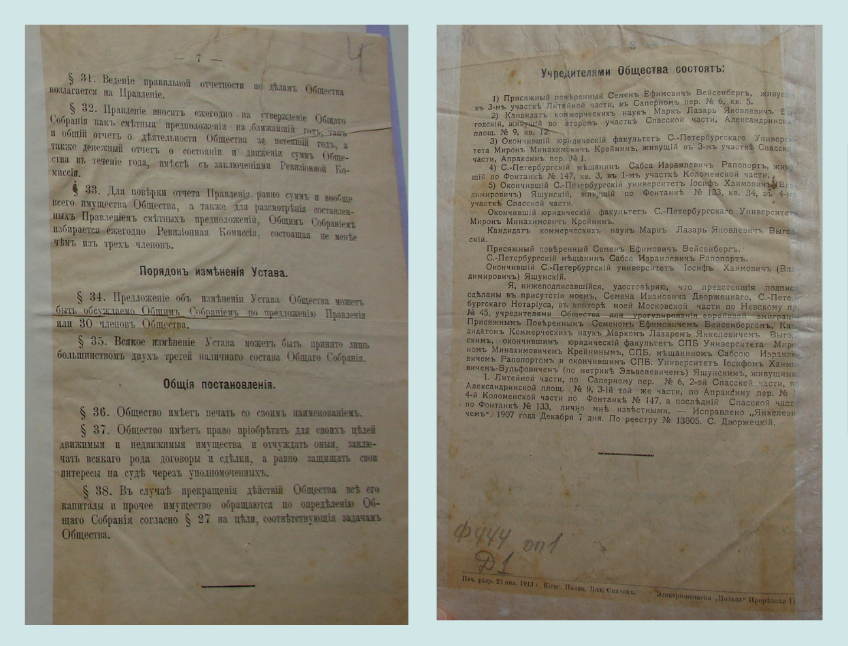
3.3 Logistical and legal assistance
A key function of the Kyiv Jewish Emigration Society was facilitating legal migration by assisting emigrants in securing the necessary documentation.
This process involved navigating the complex emigration regulations imposed by the Russian authorities, who were often reluctant to issue passports to Jewish applicants.
The Society provided guidance on how to obtain exit permits and collaborated with foreign consulates to ensure emigrants met the legal requirements of their destination countries.
Beyond documentation, the Society also played an instrumental role in arranging passage through major transit ports, such as Odessa and Hamburg.
It worked closely with European shipping companies to secure affordable tickets for Jewish emigrants and coordinated travel logistics to minimize delays and complications.
Given the increasing restrictions on Jewish migration imposed by countries like the United States, the Society also advised emigrants on U.S. immigration policies, helping them prepare for potential legal obstacles upon arrival.
3.4 Health and medical support
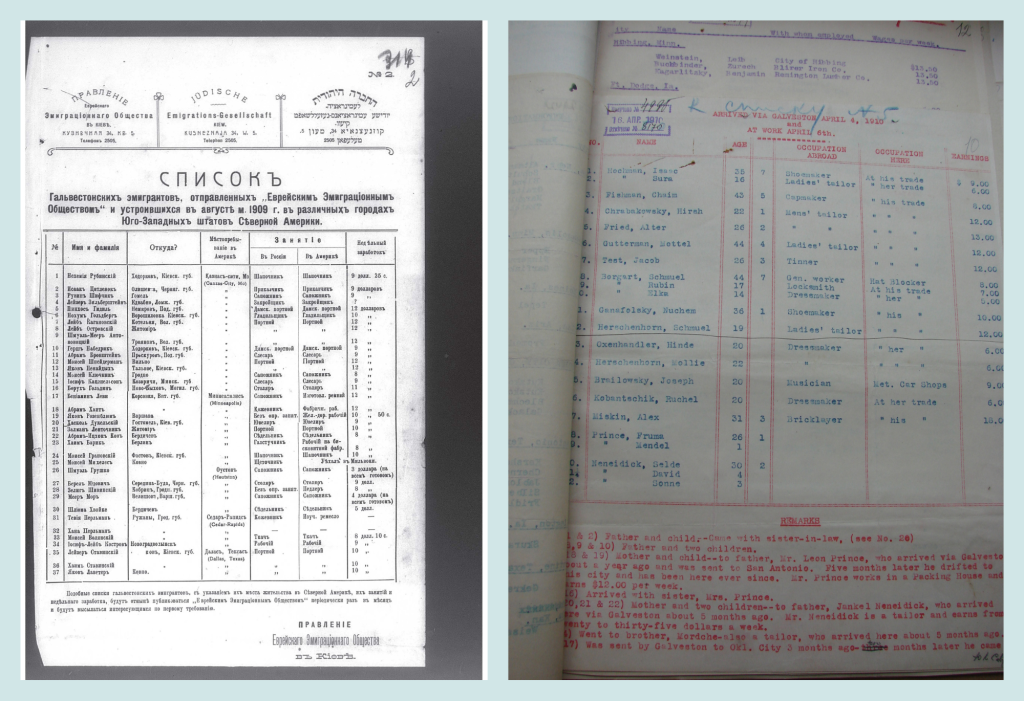
One of the major challenges for Jewish emigrants during this period was passing the medical inspections required by U.S. immigration authorities.
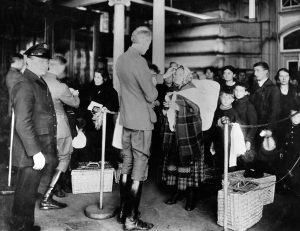
Many emigrants suffered from malnutrition and disease, which put them at risk of being denied entry or deported upon arrival.[4]
To address this issue, the Kyiv Jewish Emigration Society established pre-departure medical screenings to ensure that emigrants met the required health standards before embarking on their journey.
In cases where individuals were diagnosed with treatable conditions that could have disqualified them from emigrating, the Society provided medical treatment, covering the costs of care until they were fit to travel.
This preventive approach significantly reduced the number of Jewish emigrants who faced rejection upon reaching the United States, thereby increasing the overall success rate of migration efforts.
3.5 Financial aid and support networks
The Society also provided financial assistance to emigrants, ensuring that economic hardship did not prevent families from leaving dangerous or unstable conditions.
Many Jewish emigrants could not afford the full cost of their journey, and without support, they risked becoming stranded in transit.
The Society, funded by donations from wealthy Jewish families and philanthropic organizations, covered transportation expenses, accommodation costs, and provisions for food along migration routes.
One of the most innovative aspects of the Society’s financial support was its coordination with Jewish aid organizations abroad. By working with Jewish communities in destination countries, the Society ensured that emigrants had access to housing, employment opportunities, and social support upon arrival.
This network helped reduce the economic vulnerabilities of newly arrived Jewish immigrants, allowing them to integrate more successfully into their new environments.
Its meticulous records, preserved in the State Archive of the Kyiv Oblast (Fond F-444), include emigrant questionnaires, health logs, shipping manifests, and correspondence with authorities.
The Society even published instructional guides for migrants on what to expect at Ellis Island or Galveston.[5]
3.6 The Galveston Movement
The Kyiv Jewish Emigration Society played a key role in the Galveston Movement (1907–1914), an initiative funded by Jewish philanthropist Jacob Schiff and coordinated by the Jewish Immigrants’ Information Bureau in the U.S.
Its goal was to redirect Jewish emigrants from crowded East Coast cities to underpopulated areas of the American South and Midwest.[6]
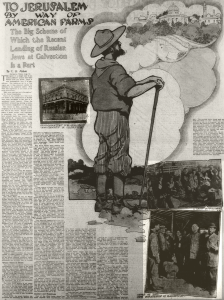
The Society organized pre-departure preparations, including securing ship tickets, coordinating group travel from Kyiv to European ports (typically Hamburg), and verifying that emigrants were healthy, employable, and properly documented.
Emigrants would arrive at Galveston, Texas, and be directed to jobs and housing placements that had been coordinated in advance.
Between 1909 and 1914, thousands of Jews emigrated via this route with Society’s support. Reports indicate that the Society carefully screened candidates and coordinated with partners to avoid “overburdening any one American city.”
3.7 Conclusion
The Kyiv Jewish Emigration Society case illustrates both the possibilities and limitations of non-state migration governance in the early 20th century.
As a legally recognized Jewish NGO operating within an empire, the Society managed to facilitate the emigration of several thousand individuals, primarily through the Galveston
Movement, at a time when state structures were either repressive or indifferent to migrant needs.
Its work spanned:
- bureaucratic assistance,
- medical screening,
- financial aid,
- international coordination.
As such, it prefigures many elements of today’s humanitarian and refugee infrastructure.
Yet the scope of its achievements must be viewed critically.
Despite its ambition, the Society was able to assist only a small fraction of the more than two million Jews who emigrated from the Russian Empire between 1881 and 1914.
The Society faced numerous obstacles, including:
- opposition from authorities;
- logistical limitations;
- donor fatigue;
- the increasingly exclusionary immigration policies of Western states.
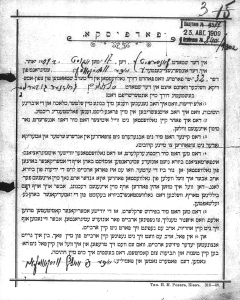
These challenges became overwhelming with the onset of World War I, which ultimately led to the organization’s dissolution.
Moreover, the Emigration Society was deeply rooted in broader Jewish colonizing and philanthropic movements, particularly the Jewish Colonization Association and the American-led Galveston program.
While these transnational networks provided critical support, they also pursued their own ideological and strategic agendas, often favoring ‘desirable’ emigrants who conformed to ideals of productivity, moral behavior, and Zionist or assimilationist visions.
The Society’s work, while humanitarian in purpose, was also shaped by lobbying efforts aimed at managing Jewish migration flows in ways that aligned with the priorities of elite philanthropy.
In this sense, the Kyiv Jewish Emigration Society mitigated and reproduced control forms.
It offered protection and mobility, but also participated in filtering, regulating, and redirecting human movement.
Its legacy thus provides not only a model of NGO innovation but also a lens through which to critically assess the entanglements of humanitarianism, migration control, and political lobbying in historical and contemporary contexts.
Review Exercises
We have now come to the end of the final section in the unit. Complete the following exercises based on what you have learned.
Exercise 7.3
These questions are designed to support classroom discussion, individual reflection, or written assignments. They encourage you to synthesize the concepts explored throughout the unit, critically examine the Kyiv Jewish Emigration Society case, and connect historical insights to present-day migration governance.
- How do non-state actors, particularly NGOs, influence migration governance in contexts where state institutions are either unwilling or unable to manage migration effectively?
Consider the case of the Kyiv Jewish Emigration Society and reflect on how it compensated for weak state capacity or political hostility. - How do NGOs navigate or contest state power?
Consider the existing and potential conflicts of power and restrictions for NGOs that occurred in the Russian Empire. - How did the Kyiv Jewish Emigration Society exercise logistical, expert, and moral authority, and what made it credible in the eyes of emigrants and international partners?
- How do diaspora and transnational networks shape migration pathways and governance frameworks?
Discuss how the coordination between the Kyiv Jewish Emigration Society and Jewish organizations abroad reflected broader patterns of transnationalism. - Can the historical work of organizations like the Kyiv Jewish Emigration Society be viewed as a precursor to modern refugee protection?
What similarities and differences can be observed between historical and contemporary humanitarian models?
Exercise 7.4
This section offers structured opportunities for you to apply theoretical and historical insights through research, collaboration, debate, and problem-solving.
(These assignments are suitable for undergraduate and graduate students and can be adapted for use in seminars, group work, or independent study).
Research Essay
Write an essay analyzing the role of the Kyiv Jewish Emigration Society in shaping non-state migration governance in late Imperial Russia. Your essay could consider:
- The political and legal context of Jewish emigration
- The specific functions and services of the Society
- Its transnational partnerships and authority
- A comparison with a modern NGO involved in refugee support (optional)
Group Presentation
In small groups, prepare a 10-minute presentation on one of the following topics:
- The Galveston Movement as a model of transnational migration governance
- NGO-state relations and migration regimes (historical or modern)
- Diaspora philanthropy and its role in humanitarian aid
- Historical Jewish migration compared to present-day refugee crises
Include primary and secondary source references. Visual materials (maps, archival images) are encouraged.
Comparative Policy Brief
Choose a contemporary migration or refugee context (e.g., Ukrainian refugees in Poland, Syrian displacement in Turkey, Central American migration to the U.S.). Write a 1,000-word policy brief comparing it to the historical case of the Kyiv Jewish Emigration Society. Address:
- Governance structures and gaps
- Role of NGOs and diaspora networks
- Legal and humanitarian challenges
- Lessons for policymakers
NGO Simulation Exercise
In teams, design a strategic plan for an NGO operating in the Russian Empire in 1910. Your plan should address:
- Legal compliance and passport regulation
- Medical screening procedures
- Coordination with foreign aid organizations
- Budget, staffing, and risk mitigation strategies
- Outreach to potential emigrants and donors
Each team presents their proposal and defends its feasibility.
Class Debate
Organize a formal debate on the proposition:
“Migration governance should remain the exclusive domain of the state.”
Divide the class into two teams: for and against. Use historical examples from the unit and modern parallels to support your arguments. Evaluate outcomes based on clarity, use of evidence, and engagement with opposing perspectives.
You have now completed Section 3 of Unit 7. Up next is a collection of resources and additional readings for this unit.
- For further reading on the imperial city of Kyiv, see Michael F. Hamm, Kiev: A Portrait, 1800–1917 (Princeton, NJ: Princeton University Press, 1993). ↵
- Statutes of The Kyiv Jewish Emigration Society, State Archive of the Kiev Oblast (DAKO), Fond 444, Inventory 1, file 1. ↵
- For more on Jewish life in imperial Kyiv, see Natan M. Meir, Kiev, Jewish Metropolis: A History, 1859–1914 (Bloomington: Indiana University Press, 2010). ↵
- For further reading on the medicalization of the US border and its effect on the history of global migration, see Fairchild A. Science at the Borders: Immigrant Medical Inspection and the Shaping of the Modern Industrial Labor Force. Baltimore, MD: Johns Hopkins University Press, 2003; Lüthi, Barbara. Invading Bodies: Medizin und Immigration in den USA 1880–1920. Frankfurt am Main: Campus Verlag, 2009. ↵
- Danilenko, Vladimir. The Kiev Jewish Emigration Society: Documents on the Jewish Emigration. Fond F-444. State Archive of the Kiev Oblast (DAKO), Kyiv, Ukraine, 1-29 ↵
- Furman, Joshua J. "‘A Good Place to Emigrate to Now’: Recruiting Eastern European Jews for the Galveston Movement in 1907." Southern Jewish History 25 (2022): 99–137. ↵
